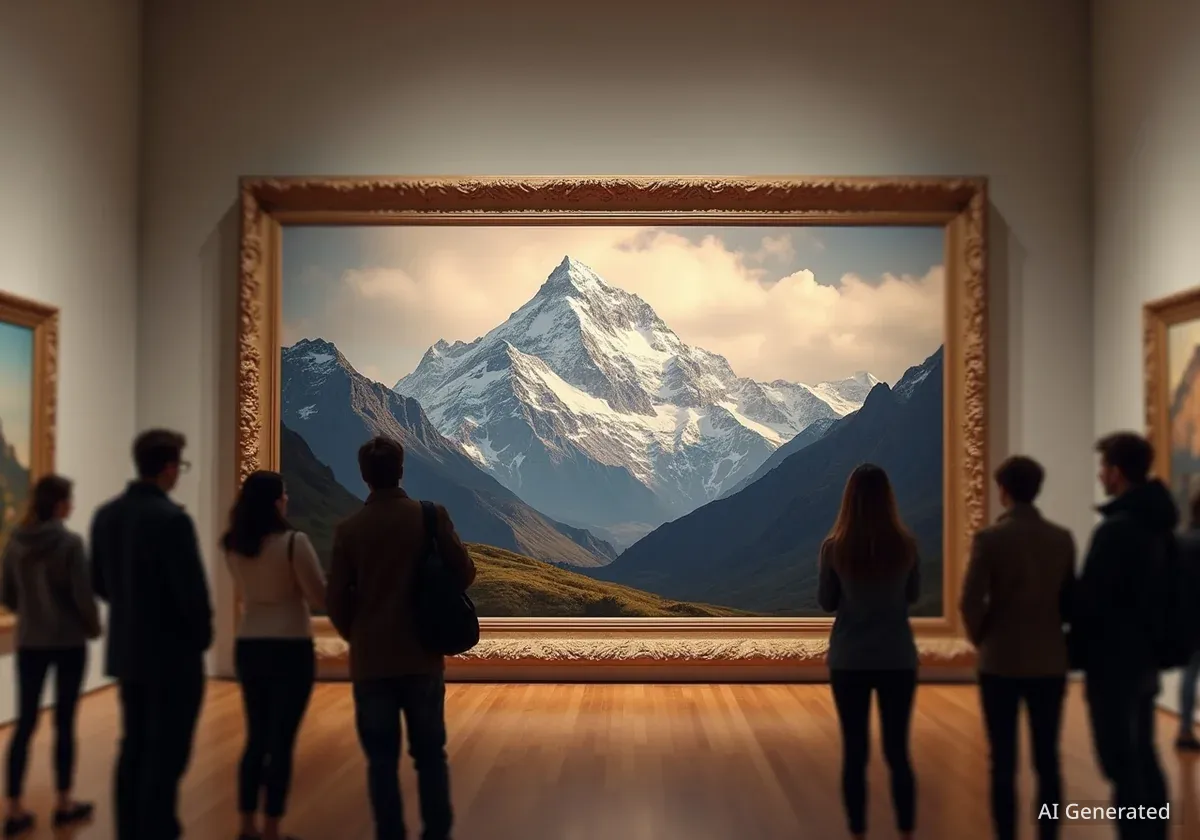The Kunstmuseum Bern is currently hosting "Panorama Schweiz," a major exhibition that delves into the artistic representation of the Swiss Alps. The collection brings together numerous works from different historical periods, offering visitors a comprehensive look at how artists have perceived and depicted the nation's powerful natural landscapes over the centuries.
Featuring paintings, drawings, and prints, the exhibition examines the evolving relationship between Swiss identity and the iconic mountain ranges. It moves beyond simple scenic views to explore themes of the sublime, the rise of tourism, and the enduring cultural significance of the Alpine environment in Switzerland's collective imagination.
Key Takeaways
- The Kunstmuseum Bern is presenting the "Panorama Schweiz" exhibition, focusing on artistic depictions of the Swiss Alps.
- The collection features a wide range of artworks spanning several centuries, showcasing the evolution of Swiss landscape art.
- Key themes include the power of nature, the development of Alpine tourism, and the role of mountains in shaping Swiss national identity.
- The exhibition provides context on how artists like Caspar Wolf, Ferdinand Hodler, and others have interpreted iconic Swiss landmarks.
A Comprehensive Look at Alpine Art
The "Panorama Schweiz" exhibition serves as a visual journey through Switzerland's most defining geographical feature: the Alps. Curators have gathered a diverse selection of artworks that collectively tell a story about the nation's connection to its mountainous terrain. The exhibition is designed to show how the artistic portrayal of the Alps has changed from the 18th century to the modern era.
Early works often depicted the mountains as formidable and untamed forces of nature, reflecting a sense of awe and fear. As time progressed, particularly with the rise of Romanticism in the 19th century, artists began to portray the Alps with a focus on their majestic beauty and spiritual significance. This shift is clearly visible in the pieces selected for the exhibition.
Later, as tourism and mountaineering became more popular, the artistic focus evolved again. The exhibition includes works that capture the beginnings of the Alps as a destination for leisure and adventure, marking a significant change in the public's relationship with the high-altitude environment. This progression offers visitors a deeper understanding of the cultural history behind the famous landscapes.
Pioneers of Swiss Landscape Painting
A central part of the exhibition is dedicated to the artists who shaped the genre of Alpine painting. One of the earliest and most influential figures featured is Caspar Wolf (1735–1783). Often considered a pioneer, Wolf was among the first to venture deep into the high Alps to paint them with scientific accuracy and dramatic flair. His works captured the raw, untouched power of glaciers, waterfalls, and rocky peaks.
"Caspar Wolf's paintings were revolutionary for their time. He didn't just paint mountains from a distance; he immersed himself in the environment, bringing a new level of realism and emotional depth to Alpine art," notes an art historian familiar with the period.
The exhibition also highlights the contributions of artists from the 19th century, such as Alexandre Calame (1810–1864), whose dramatic and romantic depictions of the Bernese Oberland became internationally famous. His work helped cement the image of the Swiss Alps as a place of sublime beauty, attracting tourists and artists from across Europe.
The Rise of Alpinism and Art
The 19th century saw the birth of modern mountaineering, or Alpinism. This new pursuit of climbing peaks for sport and exploration had a profound impact on art. Artists were no longer just distant observers but were often part of expeditions, seeking to capture the unique light, atmosphere, and sheer scale of the high mountains from perspectives never before seen.
Another key figure represented is Ferdinand Hodler (1853–1918), one of Switzerland's most celebrated artists. Hodler's approach was different; he used a style he called "Parallelism," characterized by symmetrical compositions and bold, rhythmic forms. His paintings of mountains like the Eiger, Mönch, and Jungfrau are less about realistic depiction and more about conveying a sense of monumental order and spiritual harmony within nature.
Iconic Landscapes Under the Brush
The exhibition brings famous Swiss landmarks to life, allowing visitors to see them through the eyes of various artists. One prominent example is the Staubbach Fall in the Lauterbrunnen Valley, a subject that has captivated painters for generations. This waterfall, one of the highest free-falling waterfalls in Europe, cascades nearly 300 meters from a cliff into the valley below.
Staubbach Fall Facts
- Height: Approximately 297 meters (974 feet).
- Location: Lauterbrunnen Valley, Bernese Oberland.
- Significance: It is one of 72 waterfalls in the valley and a symbol of the region. Its name, "Staubbach," translates to "dust stream," referring to the way the water spray is carried by the wind.
In the exhibition, paintings of Staubbach Fall show different artistic interpretations. Some artists emphasize its delicate, misty spray, creating an ethereal and tranquil scene. Others focus on its immense height and the dramatic cliff face, conveying a sense of nature's overwhelming scale. This variety highlights how a single natural wonder can inspire vastly different artistic responses.
Other iconic locations featured in "Panorama Schweiz" include the Matterhorn, Lake Geneva, and the Rhône Glacier. By placing works depicting the same location by different artists side-by-side, the exhibition encourages viewers to consider how artistic style, cultural context, and personal vision shape the portrayal of a landscape.
The Alps as a Symbol of National Identity
Beyond its artistic merits, "Panorama Schweiz" explores the deeper cultural role of the Alps in Switzerland. For centuries, the mountains have been a powerful symbol of independence, resilience, and national identity. The exhibition demonstrates how art has been instrumental in creating and reinforcing this symbolism.
During periods of political uncertainty in the 19th century, romanticized images of the Alps helped foster a sense of national unity. The mountains were portrayed as a natural fortress, a pristine and enduring heartland that defined the Swiss character. This connection between landscape and identity is a recurring theme throughout the galleries.
The exhibition also touches on modern interpretations, including how contemporary artists continue to engage with the Alpine landscape. Some modern works on display challenge the traditional, idealized views, addressing issues such as climate change, mass tourism, and the environmental impact on the fragile mountain ecosystem. This inclusion ensures the conversation about the Alps remains relevant to today's audience.
By visiting "Panorama Schweiz," attendees gain not only an appreciation for Swiss art history but also a richer perspective on the mountains that have shaped a nation. It is a tribute to the enduring power of the Alps to inspire awe, reflection, and artistic creation.




